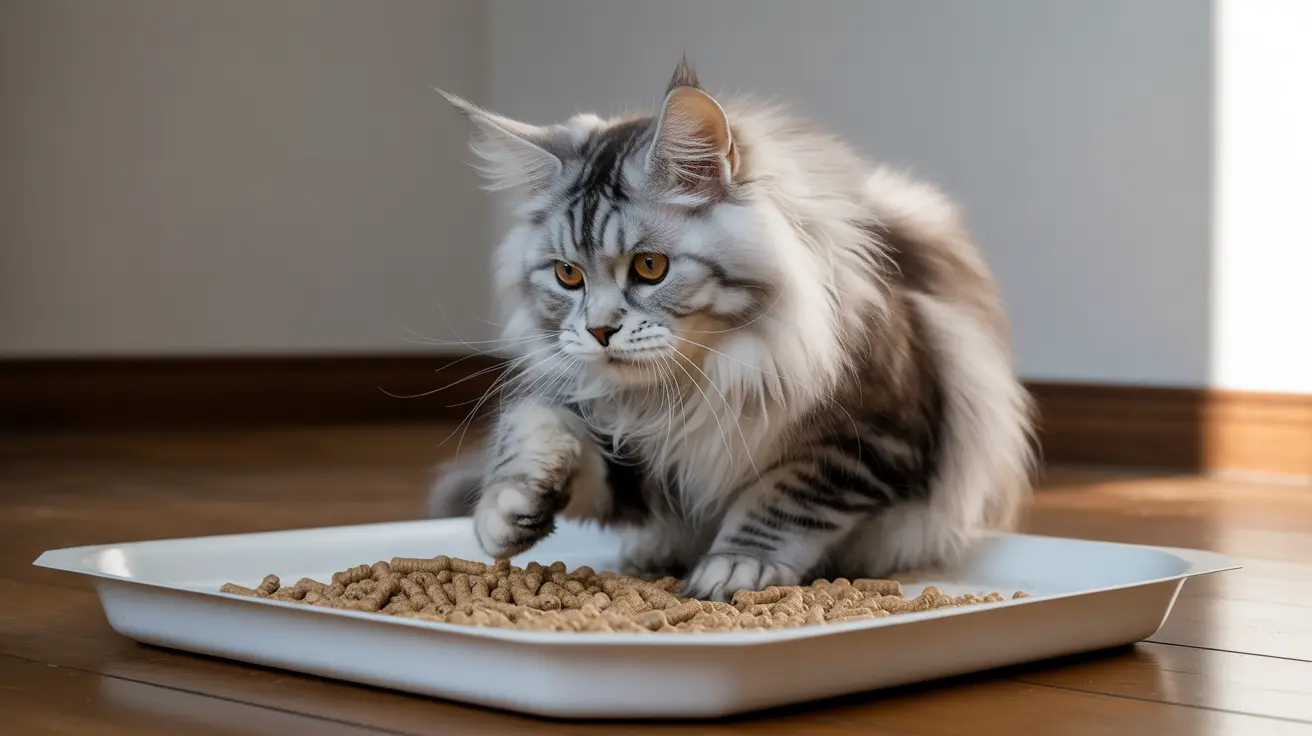Introduction
Looking for an eco-friendly and cost-effective alternative to traditional cat litter? Horse pellets for cat litter are gaining popularity among cat owners seeking sustainable solutions. These compressed wood pellets, typically made from pine, offer a natural, biodegradable option that's gentle on both your wallet and the environment.
In this comprehensive guide, we'll explore everything you need to know about using horse pellets as cat litter, from their benefits and potential drawbacks to practical tips for making the switch successfully.
What Are Horse Pellets?
Horse pellets are compressed wood materials, primarily made from kiln-dried pine, originally designed for horse bedding. These pellets are manufactured by compressing sawdust and wood shavings into small, cylindrical shapes that expand when they come into contact with moisture.
When used as cat litter, these pellets break down into sawdust when wet, creating a natural absorption system for your cat's waste. The kiln-drying process ensures the pellets are sterile and free from harmful bacteria or mold spores.
Benefits of Using Horse Pellets as Cat Litter
Cost-Effective Solution
One of the most compelling advantages of horse pellets is their affordability. A 40-pound bag of horse pellets typically costs significantly less than traditional cat litter, making it an excellent choice for budget-conscious pet owners, especially those with multiple cats.
Environmental Impact
Unlike clay litter, which is obtained through strip mining and remains in landfills indefinitely, horse pellets are biodegradable and made from renewable resources. They can even be composted (excluding waste portions), making them an environmentally responsible choice.
Dust Control and Respiratory Health
Horse pellets produce minimal dust compared to traditional clay litters, making them ideal for cats and owners with respiratory sensitivities. This characteristic also means less cleanup around the litter box area.
Potential Challenges
Different Cleaning Requirements
Horse pellets don't clump like traditional litter, instead breaking down into sawdust when wet. This requires a different cleaning approach, typically involving daily removal of solid waste and regular sifting of the sawdust from intact pellets.
Adjustment Period
Some cats may need time to adapt to the new texture and feel of wood pellets. The transition period is crucial and should be handled gradually to ensure your cat continues using their litter box properly.
How to Make the Switch
Gradual Transition Process
Start by mixing a small amount of horse pellets with your cat's current litter, gradually increasing the proportion of pellets over 7-10 days. This slow transition helps your cat adjust to the new texture and scent without causing litter box aversion.
Setup and Maintenance
Consider using a sifting litter box system to make maintenance easier. These boxes help separate the sawdust from intact pellets, streamlining the cleaning process and extending the life of your horse pellet litter.
Frequently Asked Questions
How do I transition my cat from traditional litter to horse pellets smoothly?
Mix a small amount of horse pellets with your current litter, gradually increasing the ratio over 7-10 days until you've completely switched. Monitor your cat's behavior and adjust the transition pace if needed.
Are horse pellets safe for cats, and do they pose any health risks if ingested?
Horse pellets made from pure, kiln-dried wood are generally safe for cats. However, ensure you're using additive-free pellets specifically marketed as safe for animal bedding. If ingested in small amounts, they shouldn't cause harm, but consult your vet if you notice excessive consumption.
What are the pros and cons of using horse pellets as a cat litter alternative?
Pros include cost-effectiveness, eco-friendliness, and low dust. Cons include different cleaning requirements, potential need for more frequent changes, and possible adjustment period for some cats.
How often should I change horse pellets used as cat litter to prevent mold growth?
Remove solid waste daily and completely change the litter weekly. In humid environments or multi-cat households, you may need to change it more frequently to prevent moisture buildup and potential mold growth.
Can I use horse pellets in automatic litter boxes, or will they cause damage?
Most automatic litter boxes aren't designed for wood pellets and may malfunction. Stick to manual litter boxes or specialized sifting systems designed for pellet litter.
Conclusion
Horse pellets for cat litter offer a sustainable, cost-effective alternative to traditional options. While they require some adjustment in terms of maintenance and cleaning routines, many cat owners find the environmental and economic benefits well worth the switch. Remember to transition gradually and monitor your cat's response to ensure a successful change to this eco-friendly litter solution.






